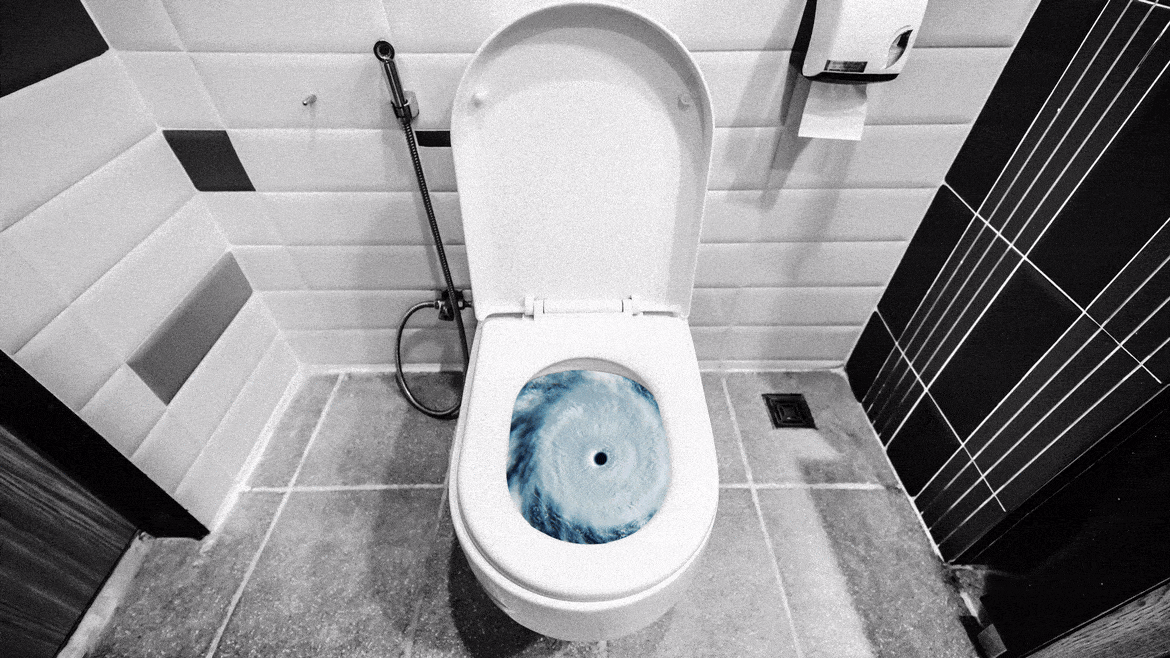This Toilet Will Predict if You’ll Have Heart Failure

People with heart disease are notoriously bad at monitoring their health on their own. In fact, 45 percent of all patients who are released from the hospital with congestive heart failure are readmitted to the hospital within 90 days.
This is not only a problem for heart patients’ quality of life but also because Medicare and Medicaid penalize hospitals when patients are readmitted too quickly after being discharged. To tackle the problem, researchers at the Rochester Institute of Technology have found a way to integrate sensors into an object that everyone interacts with several times a day and which can passively monitor heart health while requiring they do nothing more then sit down.
The next frontier in heart health is: a toilet seat.
“Even the most well-meaning patients won’t measure their blood pressure every day,” says Nicholas Conn, an engineer at the Rochester Institute of Technology and CEO of Heart Health Intelligence. In order to find the easiest way to monitor patient’s health without their input, the RIT development team asked themselves, “What can we do to integrate tech into everyday lives? A computer, a mouse, a steering wheel in the car? What do people use every day?”
The toilet seat was the most obvious answer—it makes direct contact with the skin (which makes monitoring easier) and everyone uses it.
The (A.I.) Doctor Will See You Now
Their resulting toilet seat monitor contains all the tools necessary to spot a heart patient’s degrading health. The seat has three main instruments: an electrocardiogram, which uses electrodes on the seat’s surface to measure the heart’s electrical activity; a photoplethysmogram, the same sensor that’s in a FitBit, which measures the patient’s heart rate; and a ballistocardiogram, which senses a patient’s weight and, based on how it fluctuates when the heart beats, determines the volume of blood passing through the heart. (This works because the heart builds up enough pressure that when it pumps it physically presses down on your body. The RIT team was the first to ever demonstrate that a ballistocardiogram could be used to calculate blood volume passing through the heart.)
The instruments are sensitive enough that the team estimates patients would only need to sit on the seat for about 90 seconds in order to get a full measurement. And they’ve even designed their algorithms to recognize if the patient is at rest or straining—because bowel movements and urination can actually cause huge changes in heart rate, blood pressure, and respiration. “Part of our innovation is we have algorithms that allow us to identify the physiological state of the patient. Are they are rest or straining? We reject the sections where they’re not at their baseline,” says Conn.
Though Conn says he can see a future in which the toilet seat is commercially available for anyone to purchase, for now his company is focused on developing it for medical applications. The final version of the seat will have a built-in battery that will last up to six years and likely use cellular connection technology, so that the only set-up or interaction a patient will have to do is simply install it like a regular toilet seat.

Nicholas Conn, a postdoctoral fellow at Rochester Institute of Technology and founder and CEO of Heart Health Intelligence, is part of the team that has developed a toilet-seat based cardiovascular monitoring system.
Implantable medical heart-monitoring devices, which provide a similar service, can cost up to $40,000. Conn estimates they will be able to charge just $100 per month for their toilet seat, which would include all the necessary monitoring services. This opens up passive heart monitoring to a much larger group of patients and could ultimately change many lives. Because of that, the company is working towards FDA approval and expects it to be available at the end of 2021 or early 2022.
“Really we’re focused on reducing the cost of care and improving the quality of life of patients,” he says, noting that congestive heart failure is not a curable disease. “With the average lifetime of a heart failure patient, 50 percent will die in five years. It has a worse prognosis than many forms of cancer. It’s an end-stage disease. Are you going to be in the hospital or in your home? We’re hoping to keep people in the home and improve their quality of life.”
Get our top stories in your inbox every day. Sign up now!
Daily Beast Membership: Beast Inside goes deeper on the stories that matter to you. Learn more.

 Yahoo News
Yahoo News 
